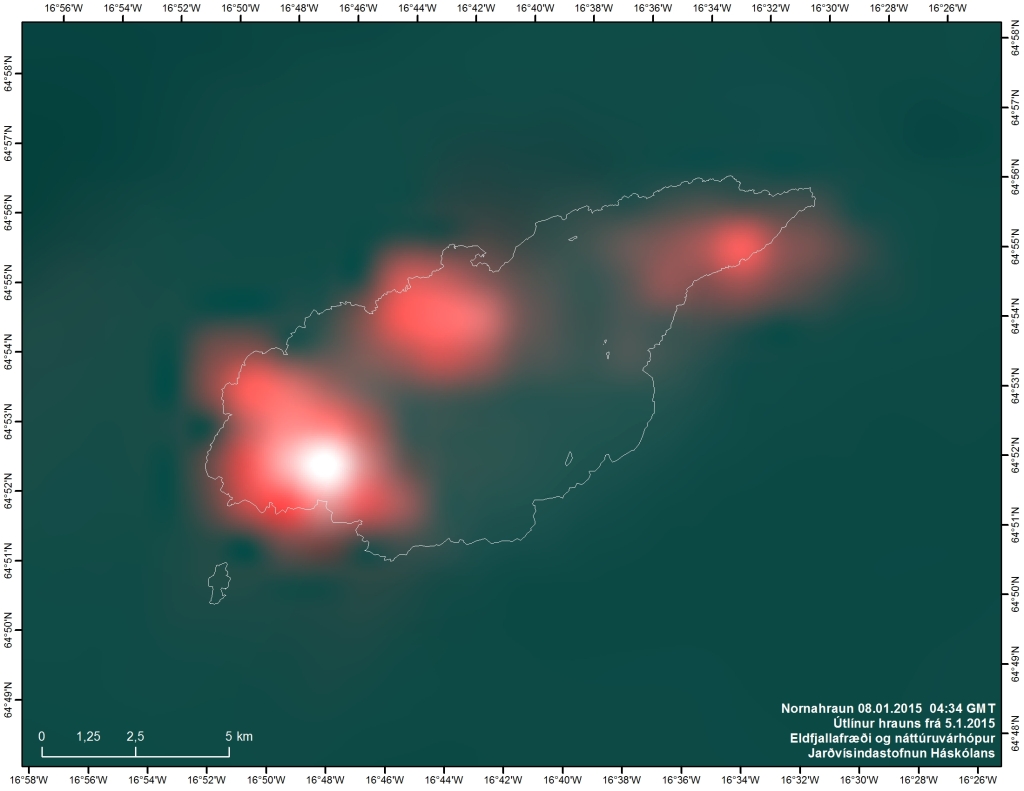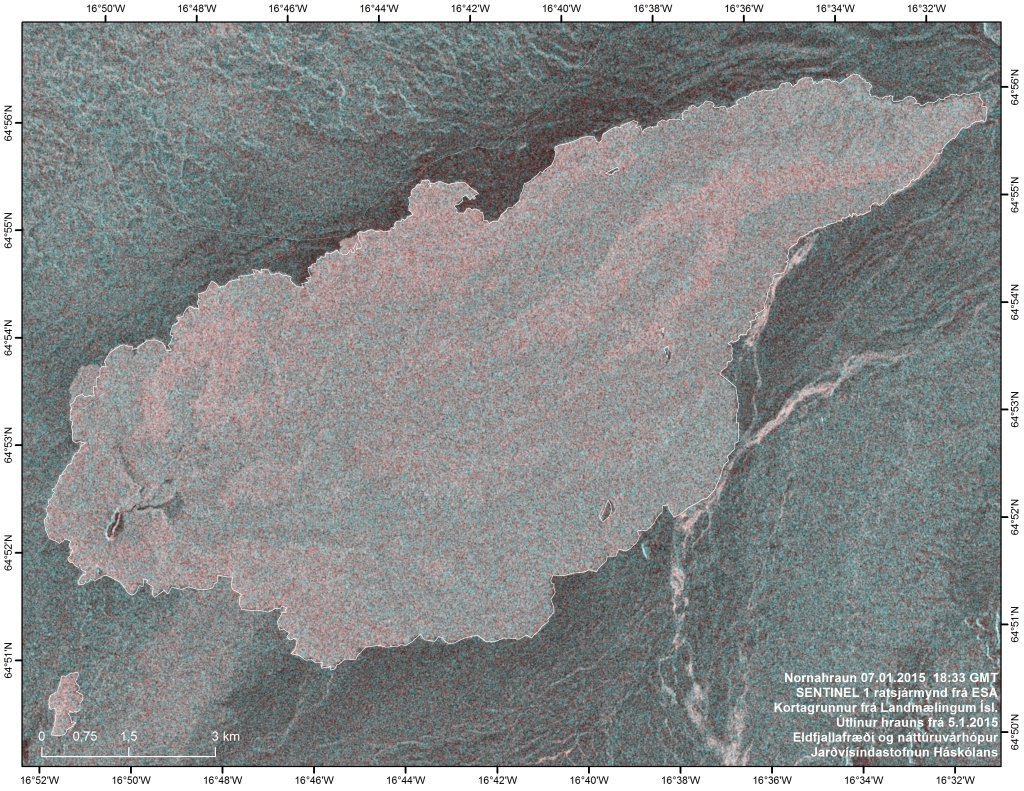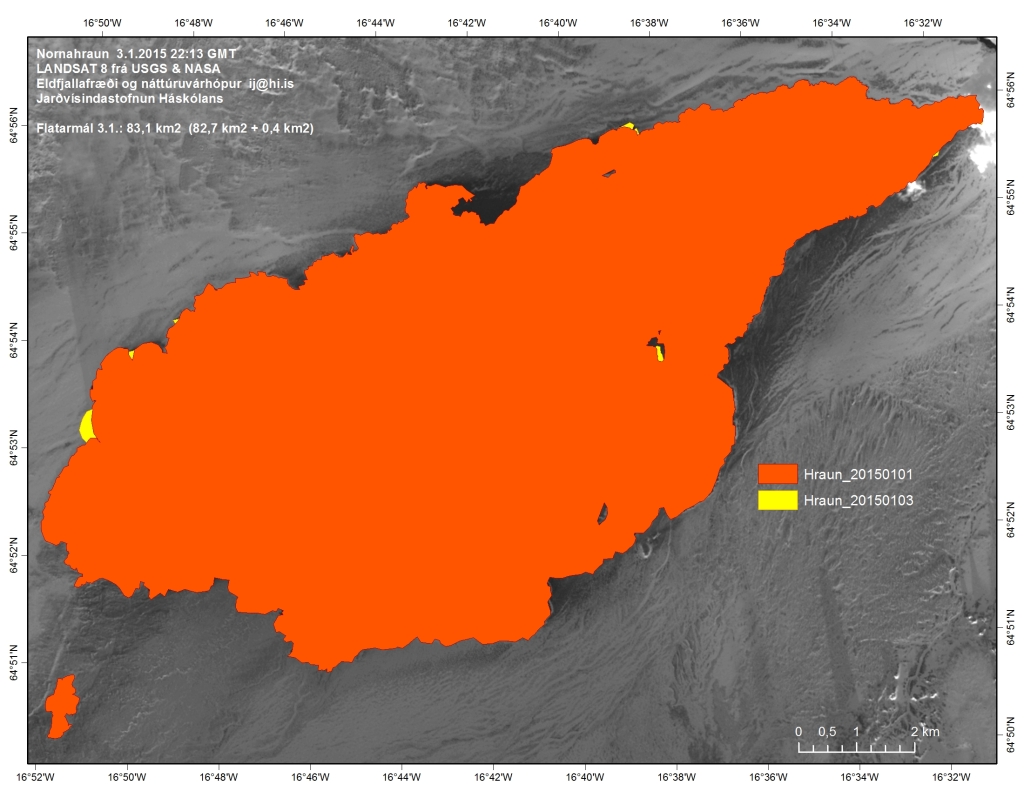Holuhraun in the first weeks of the new year
The volcanic eruption in Holuhraun continues into the new year, 2015, with similar intensity as it did in the last few weeks of the old year. Lava is still flowing in tens of qubic meters per second from the crader, building a constantly growing lava field in the sandy area north of Vatnajokull glacier. The lava field is now 84,1 km2, according to Institute of Earth Scienses UI from 10.01.2015.
Below are few images of the lava field in Holuhraun from satellites. The first image shows the lava field covering the Reykjavík area to give a relative comparison of its size.
The Civil Protection Scientific Advisory Board is still meeting regularly, twice a week, to consult and evaluate the progress of the eruption. The notes from the meetings can be found here on our page in pdf. Here are the main points from the yesterday’s meeting:
- Insubstantial changes have been in the volcanic eruption in Holuhraun over the last few weeks. Although the
power of the eruption has diminished, it is still quite forceful. The flow of lava is now largely under the surface of
solidified lava. - Seismic activity in Bardarbunga continues to be strong, but it has though somewhat decreased. The largest
earthquake since the last meeting of the Advisory Board was of magnitude M4,7 on Saturday, 10 of January at
18:23. In total 16 earthquakes were recorded of the period between magnitude M4,0-5,0 and 13 between M3,0-
4,0. Over 20 earthquakes were detected in the dyke of the same period, all of them smaller then M2,0. - Six earthquakes were detected in Tungnafellsjokull glacier since Friday. The biggest was M2,1 tonight, January 13
at 04:21. Around 20 earthquakes were detected around Herdubreid, all smaller then M2,0. - GPS measurements near northern Vatnajokull glacier show continuing slow deflation towards Bardarbunga.
- The GPS station in Bardarbunga caldera show that the caldera continues to subside.
- Indications are of increased respiratory symptoms in Iceland over the period of the volcanic eruption. No serious
cases have though been reported. - High values of sulphuric dioxide are still being recorded. Over the weekend high values were recorded in Hofn
(3400 μ/m³) in Reydarfjordur (1000 μ/m³) and in Jokuldal (7800 μ/m³).






